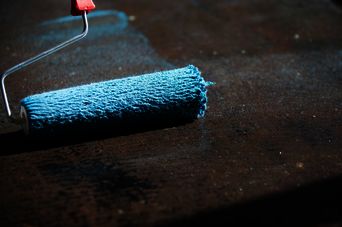Proper substrate preparation
It is often due to poor substrate preparation when the floor seems to bounce under your feet or makes a hollow sound. Also impact sound, cracks and bumps can be the result of improper substrate preparation. There are three criteria that should be fulfilled if you want to ensure proper preparation and avoid subsequent rectifications.
1. Test the surface strength (scratch test)
The subfloor is the foundation layer of the floor. In order to ensure a firm bond between subfloor and adhesive/floor covering, the foundation must be of sufficient strength. This can be tested with the so-called scratch test. For this purpose, a grid of scratch lines is applied on the surface using a sharp metal object. If there is no flaking along the edges of the scratch lines, the subfloor has sufficient strength.
2. Produce an even subfloor
Another important criterion is an even subfloor. If there are cavities or hollows, hard flooring materials like tiles, parquet and laminate will easily break. Hollow areas also cause unpleasant footfall sound. And when underfloor heating was installed, the heat is transferred less effectively into the rooms. Although resilient flooring like luxury vinyl tiles and carpets adapt to the bumps, this is not a pretty sight and often the cause of customer complaints.
3. Provide a dry and clean subfloor
If the substrate is not completely dry, the residual moisture will promote mold growth. New screeds in particular often have a high content of residual moisture. Before the new flooring can be glued on top, the subfloor should also be cleaned of all dirt. This includes adhesive residues and greasy or oily impurities. Tip: Always sweep and vacuum the subfloor one more time before applying the flooring adhesive.

©GEV
Share article on Social Media:
